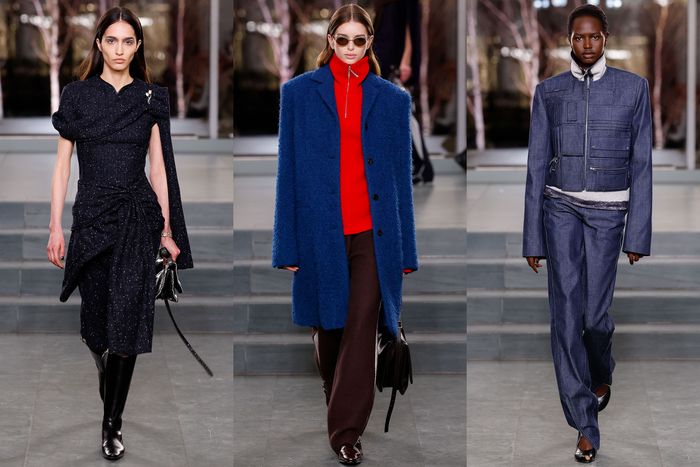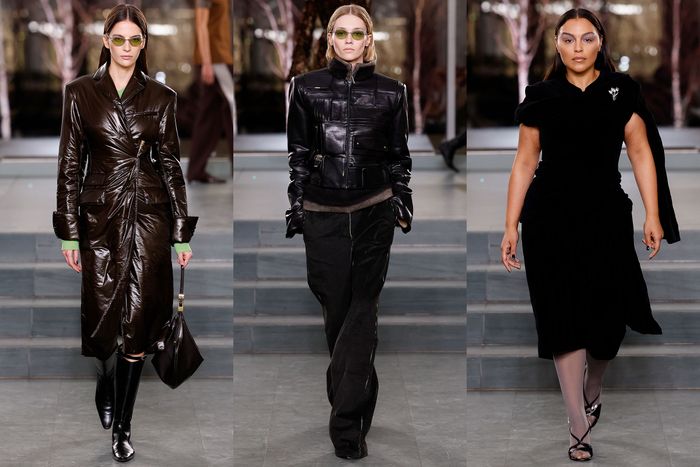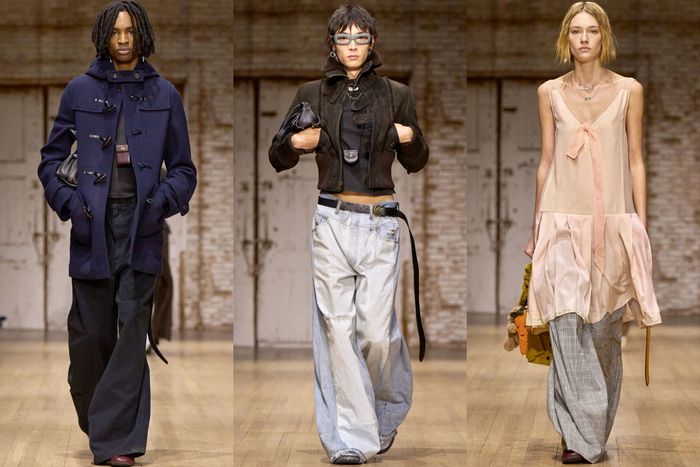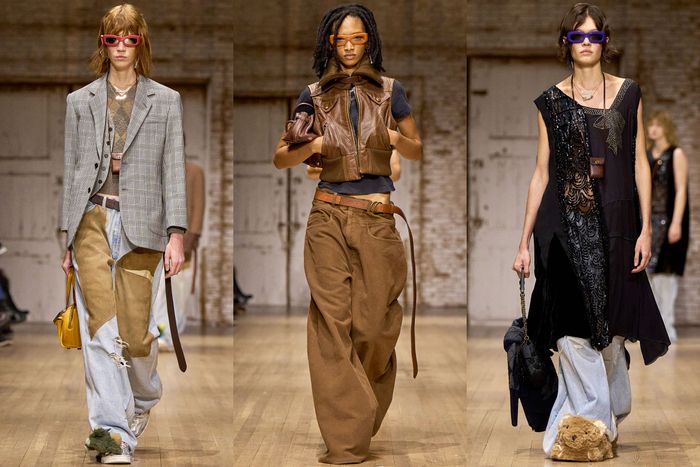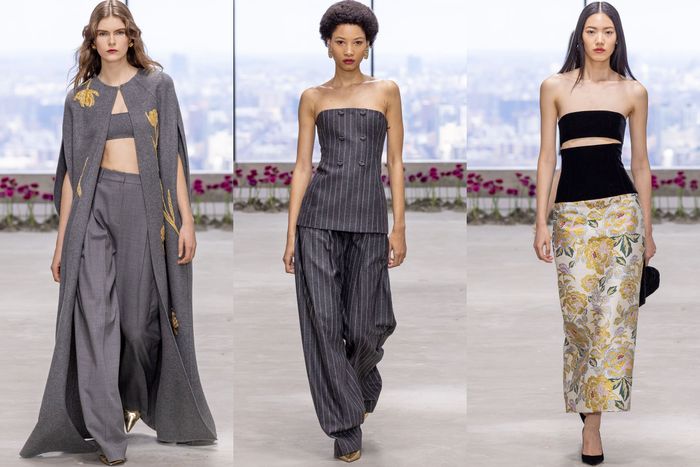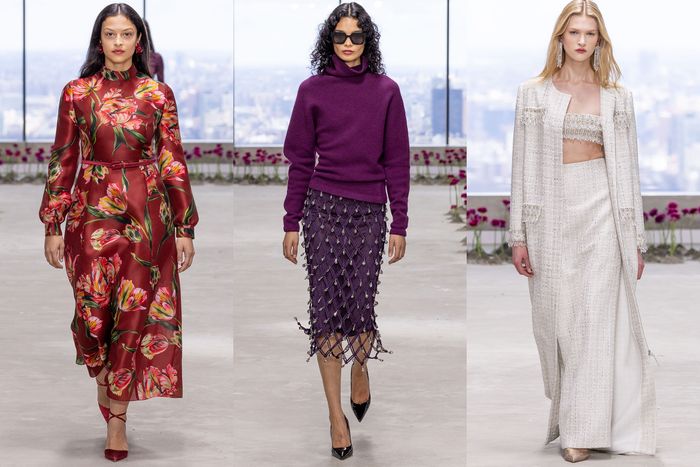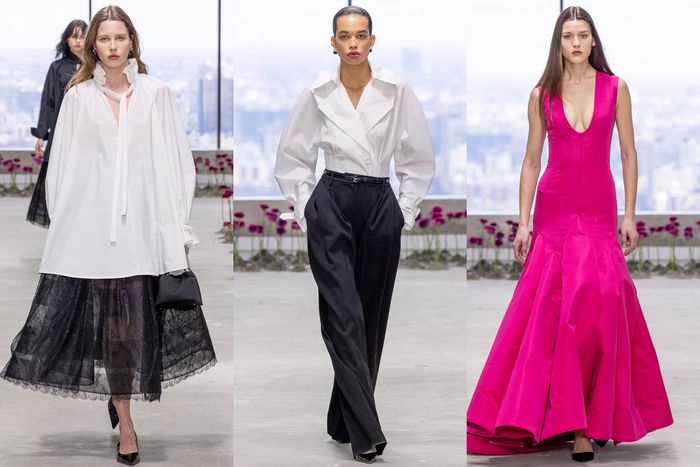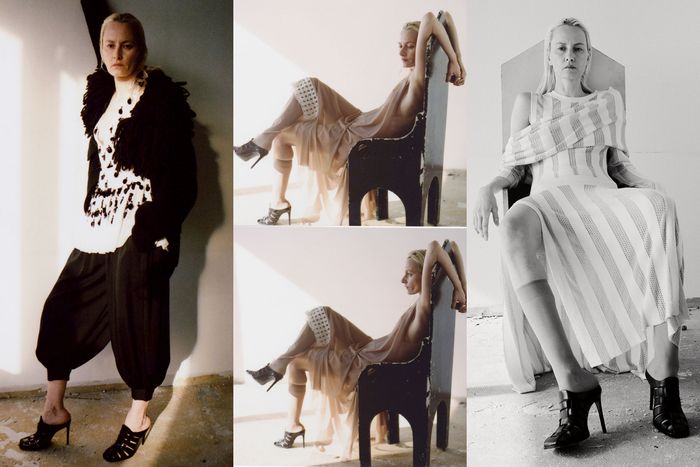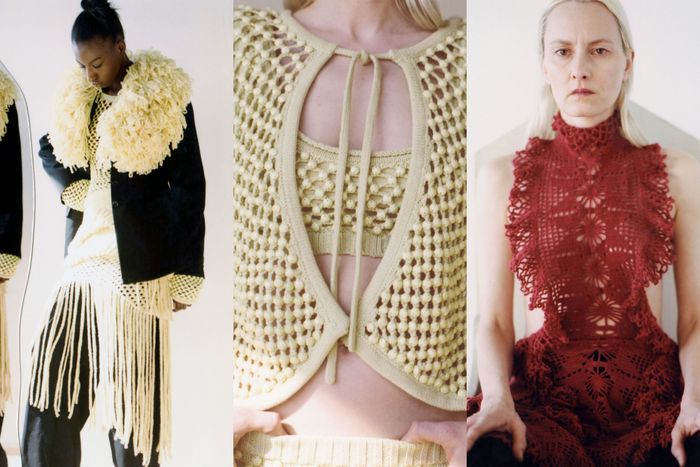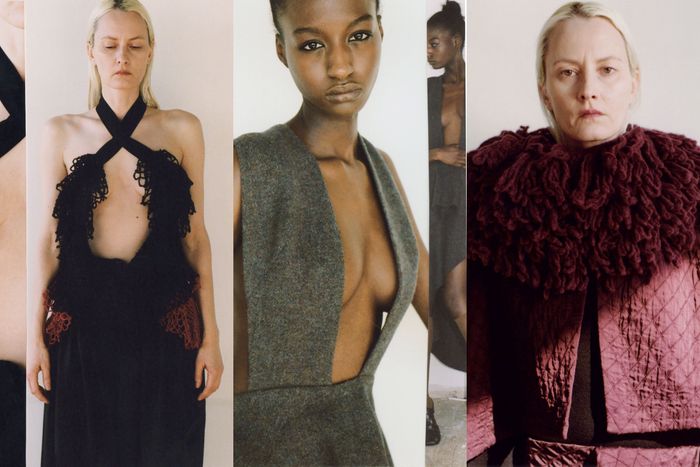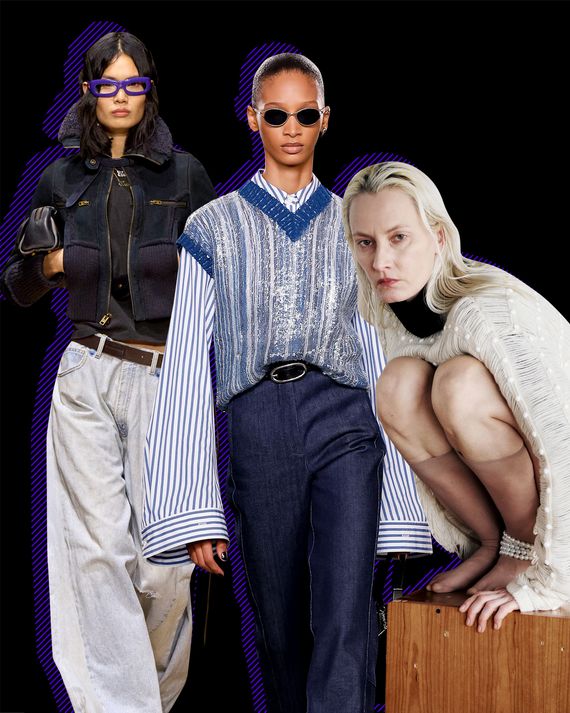
Tory Burch, Carolina Herrera, and Coach are all relatively big names in American fashion, and as the fall collections here limped to a close, they did what successful brands do: They played it safe.
In the notes for her show on Monday night at the Museum of Modern Art, Burch said her inspiration was “twisted American sportswear,” but on her runway, the results mostly looked like tweaked classics. Last season, she offered a fine-knit polo shirt with tailored trousers; this season, the cotton-and-wool material looked more substantial, but the style also resembled a polo or rugby shirt with white cuffs and collar, which Burch paired with track pants made of a high-quality Japanese jersey. She also reprised the look of a full, below-the-knee skirt with a nipped-waist wool jacket — this time, in lime green over brown or as a matching brown suit. And I feel certain I’ve seen striped shirts with very full sleeves from her in the past. She paired one version with a gray-blue sequined knit vest and sharp-looking denim pants.
Burch is obviously talking to her customers, offering them wardrobe pieces like her well-cut trousers, snug leather jackets, and versatile sweaters (now in warm yellow and red). Are women still wearing sweatpants? If so, Burch has given the style more polish. There were a few actual twists in the collection, notably a dress in a speckled black wool that draped closely around the body, and a similar version, in black velvet, on the model Paloma Elsesser. Burch evoked the same “twisted” effect with a dark padded nylon coat, closed in the front with a kind of giant hatpin. But you can’t get too excited about a styling trick.
A good reason we’ve seen so much retro fashion at the New York shows is that it makes you feel confident and protected, though it’s hardly inspiring. Coach went so far as to construct its version of a downtown New York warehouse inside the Park Avenue Armory. It was actually made of giant printed panels that formed a square on the drill floor with a live band — Nation of Language — set up in the middle.
“We created a space that probably doesn’t exist anymore in Manhattan,” said Coach’s creative director, Stuart Vevers. It probably does, but the illusion of a warehouse served Vevers’s purpose — and his belief that there’s nostalgia for the 1990s in New York, especially for the undeveloped Meatpacking District before fashion brands moved in. (Vevers settled in the city from Europe in 1996.) There was a certain innocence then, he said — “and a freshness.”
Despite the nostalgia trip, I liked a lot of what he showed. The combination of extremes — a tight, small-shouldered jacket with really oversize jeans made from a faded patchwork of denim (new fabric as well as deadstock and upcycled stuff) did look fresh. Vevers opened by ticking off classic outerwear: a leather car coat, a peacoat, a collegiate toggle coat, and a big faded black shearling with a high collar. The models wore sneakers or soft loafers. The fact that the clothes, which included loose-fitting pastel dresses worn with pants, all looked broken in and not overly styled made the collection work.
“I pushed myself harder this season to make Herrera younger and sexier,” said creative director Wes Gordon. “Everything’s softer, more to the body.”
He didn’t mention Ozempic or other weight-loss drugs, but you have to believe they are already influencing the shape of clothes, especially at the high-priced end. Think of Daniel Roseberry’s recent Schiaparelli couture collection, which dwelled on physical perfection, and then contrast it with Alessandro Michele’s Valentino creations, which often concealed the body. Science may become fashion’s new dictator.
Gordon presented his streamlined looks on an empty floor of a midtown skyscraper, around a large center patch of 3,000 fresh red ranunculus set in small mounds of dirt and sand on the bare floor. Although the show sagged in the middle — too many conventionally tasteful cocktail styles in cream or nudie beige — he achieved the shift he wanted. Among the best looks were a strapless jumpsuit in gray pin-striped wool, a simple but dramatic cape in gray embroidered with gold flower stems, and a burgundy macramé skirt embellished with crystals and worn with a slightly oversize turtleneck in the same color. Gordon did his event outfits but this time added a trio of crinolines overlayed with black Chantilly lace and worn with loose white cotton shirts — a playful nod to the style of the label’s founder, Carolina Herrera.
One of the few designers who took real risks during the shows is Rachel Scott of Diotima. She’s not interested in American sportswear or the ’90s or in sexiness, though her clothes are certainly sensual and often quite bare. Rather, she’s curious about how ordinary Black women have historically been represented over several centuries. She noticed in her research that there was a dominant view: as strong women. “And that’s all there is,” Scott said Monday evening. “There’s no sensuality, no complexity, no nuance. And the reason is her story hasn’t been considered.”
So Scott put out a call to her community asking for images of women and received more than she could have imagined, including photos of individuals from the turn of the past century. Seeing how they looked in their private environments inspired “Matriarch,” her fall collection. It’s quite a different Diotima — looser, less embellished, sensuous but not sweet or sentimental, and more original in design and materials. One of the most striking looks is a creamy openwork evening capelet that evokes the delicate texture of drapery or a bedcover. There’s nothing else like it at the New York shows. Scott also used gray wool (a Harris tweed, I think) to create a kind of pinafore, shown without an undergarment, and deep-red wool for a long, lovely crocheted top.
There were as many soft styles as structured, including a boiled-wool jacket with a deep, wool-fringed collar. Scott showed her version of bloomers, the mid-19th-century trouser style that offended men and women alike. She cropped them a bit at the ankle and reduced the original volume, and they looked amazingly right with one of her dark blazers.
This collection is filled with ideas and a different energy, and it began because Scott looked where most people were not looking.



